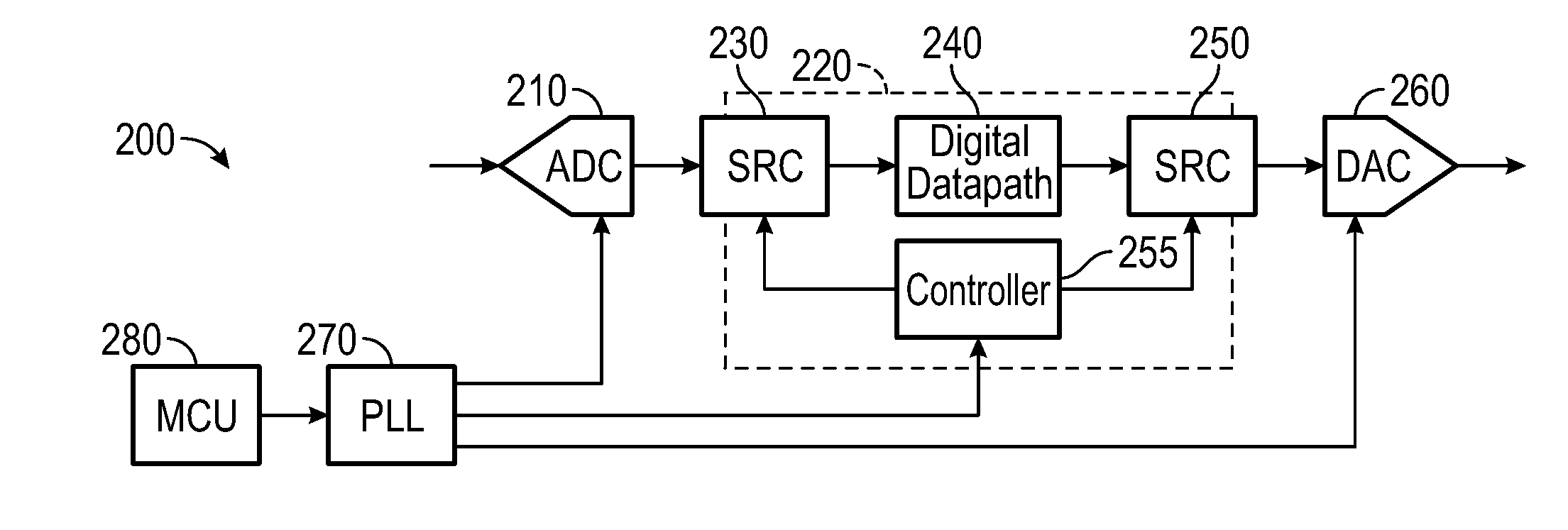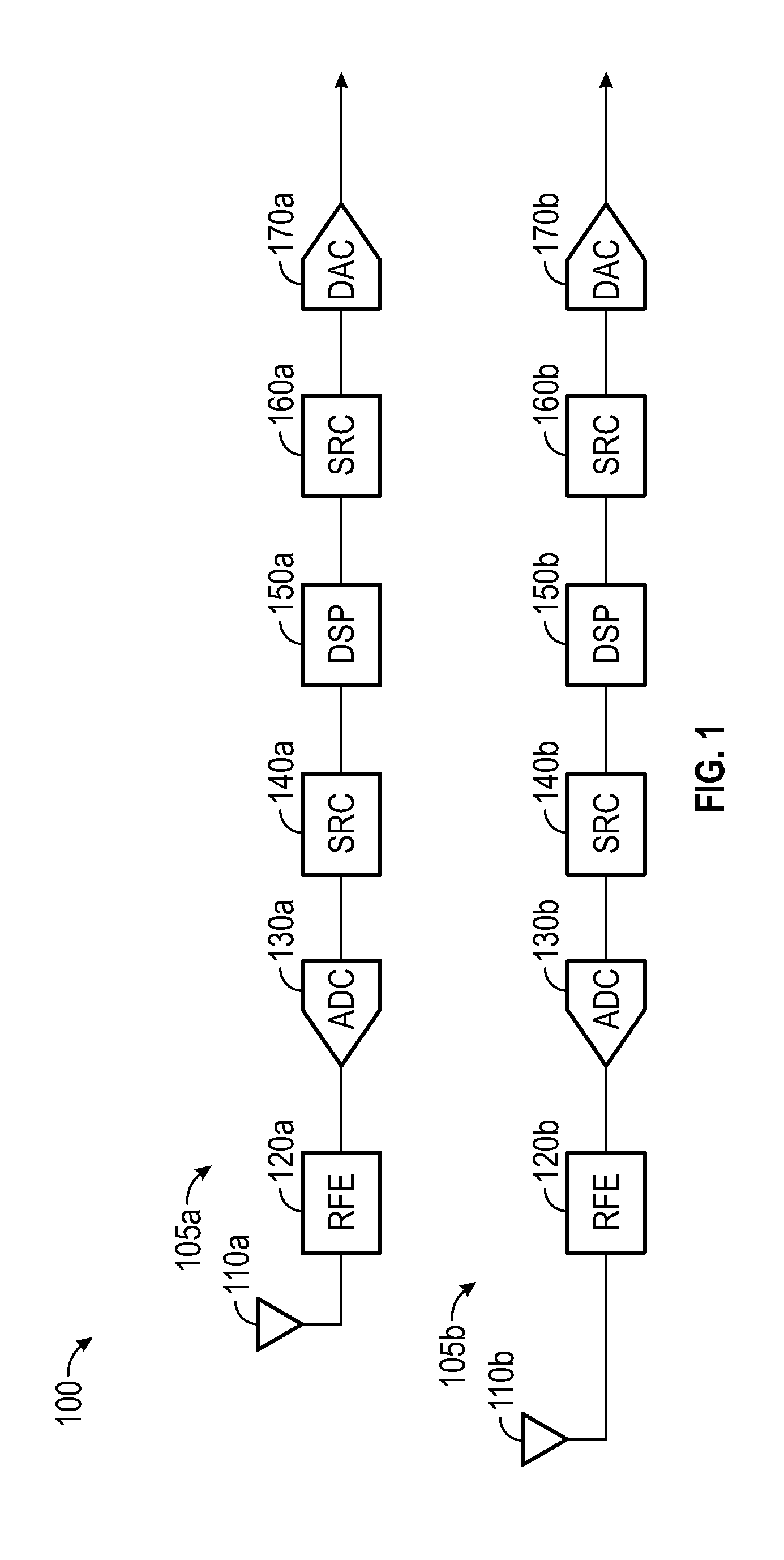Frequency management using sample rate conversion
a frequency management and sample rate technology, applied in the field of frequency management using sample rate conversion, can solve the problems of increasing the cost of area and power, affecting the accuracy of the signal,
- Summary
- Abstract
- Description
- Claims
- Application Information
AI Technical Summary
Benefits of technology
Problems solved by technology
Method used
Image
Examples
Embodiment Construction
[0026]In various embodiments a frequency management system employs a pair of arbitrary rate sample rate converters (SRCs) to alleviate distortion caused by switching sampling rates in a mixed signal device such as a RF receiver (e.g., a TV receiver). The first SRC is placed at the start of a digital datapath and is configured to convert samples received at a variable rate from a digitizer such as an analog-to-digital converter (ADC) to a fixed, virtual rate. Note that this fixed rate is an average fixed rate that is obtained from selecting cycles at the variable rate, while certain other cycles at the variable rate are inactive or dropped. Subsequent digital processing is done at the virtual rate or at fixed multiples or divisions of the virtual rate. Following the digital datapath, just before a digital-to-analog converter (DAC), the second SRC is used to convert samples from the virtual rate, or a fixed multiple or division of the virtual rate, to the variable DAC sample rate. A c...
PUM
 Login to View More
Login to View More Abstract
Description
Claims
Application Information
 Login to View More
Login to View More - R&D
- Intellectual Property
- Life Sciences
- Materials
- Tech Scout
- Unparalleled Data Quality
- Higher Quality Content
- 60% Fewer Hallucinations
Browse by: Latest US Patents, China's latest patents, Technical Efficacy Thesaurus, Application Domain, Technology Topic, Popular Technical Reports.
© 2025 PatSnap. All rights reserved.Legal|Privacy policy|Modern Slavery Act Transparency Statement|Sitemap|About US| Contact US: help@patsnap.com



